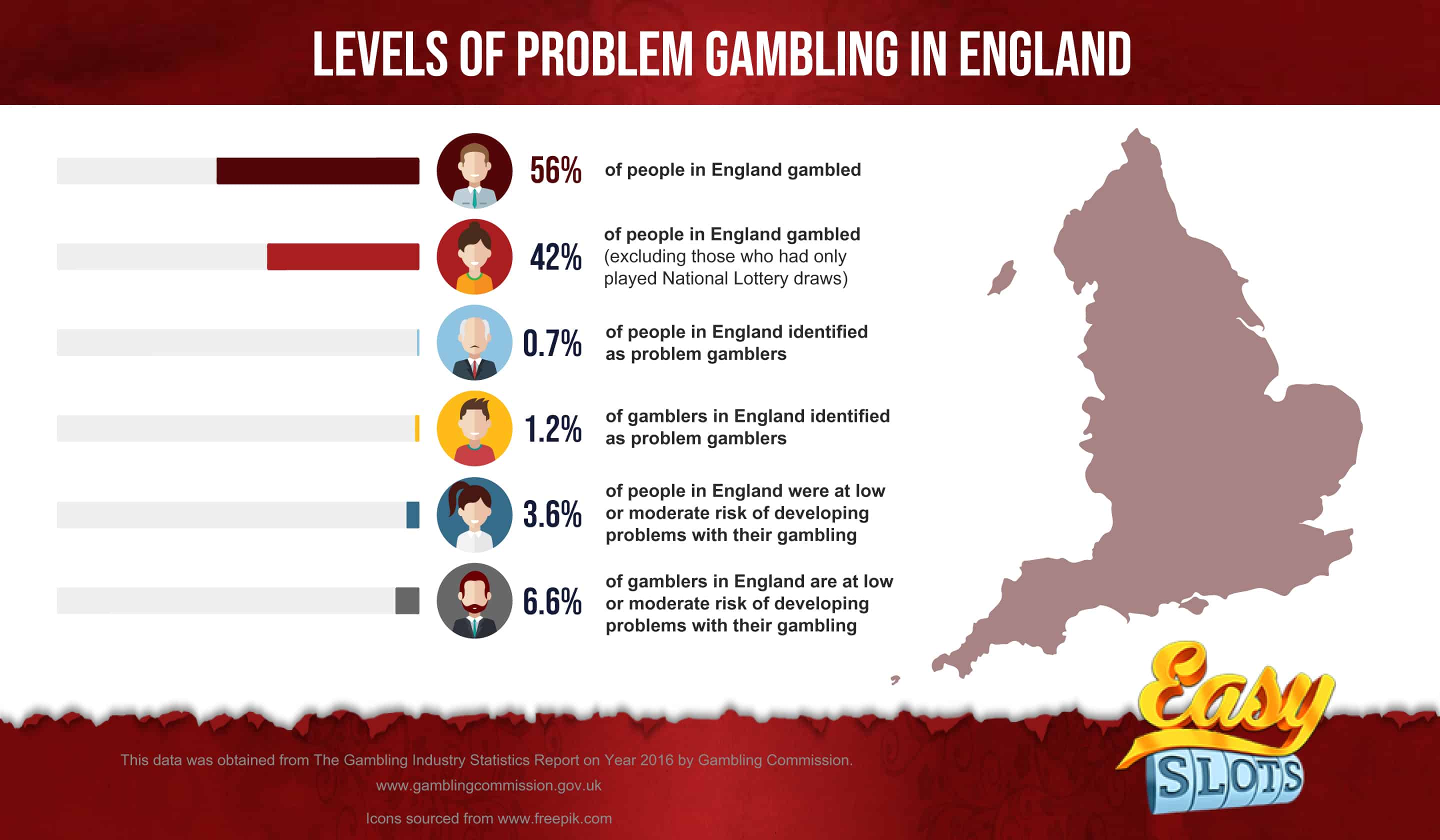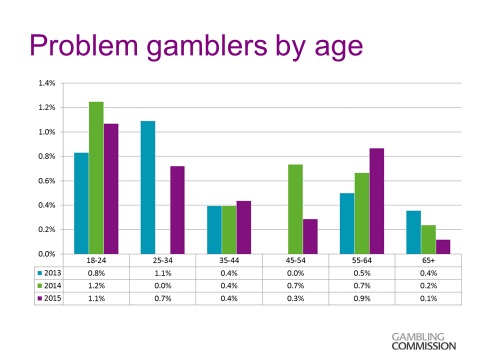Problem Gambling Graphs
Nowadays gambling has become even more popular than decades ago, owing to the development of Internet technologies. There are millions of gamblers all over the world. Most of the players, who parlay responsibly and don’t cross their safe bankroll limits, will have a great time.
- Problem Gambling Stories
- Problem Gambling Severity Index
- Problem Gambling Graphs Definition
- Problem Gambling Services Ri
- Problem Gambling Services Ct
- Problem Gambling Statistics
Unfortunately for some people, it’s not just harmless entertainment. Sometimes it can lead to serious issues in different aspects of life. This might happen when a person starts experiencing addiction problems (a player is not capable of controlling his/her gambling behavior).
Gambling debt and addiction. While gambling can be a source of entertainment, it can also cause serious money problems, addiction and debt. 0.5% of the UK’s adult population are problem gamblers.; 15% of online gamblers have been gambling in the workplace in the past four weeks.; 3.1% of gamblers have bet more than they can afford to lose.; Gambling addiction is estimated to cost the UK. Citizen Link Tuesday, June 15, 2010 – 4:30pm Written by Chad Hills For millions of Americans, gambling addiction leads to hopeless pain and misery; for some it leads to death. The National Gambling Impact Study Commission report estimates that nearly 15 million men, women and children have a problem or pathological addiction to gambling. Gambling-related.
Problem Gambling Prevalence Rate
Some countries show a higher prevalence rate than others, and it may be explained by cultural, economic, political, and legal factors. We’ll provide thorough information about gambling addiction in different parts of the world, based on recent research from 2016.
Australia
According to the statistics on problem gambling among the population, Australia shows quite high numbers. Approximately 0.5-1% (figures vary in different states) of citizens suffer from this addiction. This is so due to the changes in the betting industry due to digital technologies.
More people can now access betting entertainment via different online services, therefore the cases of unhealthy gambling have increased greatly. Each year Australians spend almost $1.5 billion on online wagering. Moreover, due to the high rate of illegal (in AU) sites, people are losing up to $0.5 billion to overseas companies.
That’s why Australia does everything to prevent unauthorized companies from entering their inner gaming market. According to the Gambling act 2001, with the recent amendment (2016), it is prohibited for foreign casino operators to provide their service there unless they are not licensed in AU.
Such strict rules also serve for decreasing the rate of dangerous betting habits.
Canada
Interestingly, Canada is among the countries with the highest percentage of gambling addicted citizens. Imagine that ¼ of all CA residents (or their friends/relatives) have suffered from some sort of bad consequences (job loss, depression, marriage problems and etc.) owing to their dependence.
And more than 80% of respondents have participated in lotteries during the past year.
It is a serious problem that affects millions of Canadians, although only half of those surveyed agreed that gambling can be dangerous.
New Zealand
New Zealand has the least number of problem gamblers according to the study by Business and Economic Research. It states that only a few citizens are liable to excessive betting behavior. Most of the casino clients in NZ are well aware of possible hazards, and know when it’s better to stop playing.
Norway
Despite the fact that there is government regulation of gambling activities, which provides various measures to decrease addiction problems among citizens, Norway is far away from the minimum rate of dependent people. Approximately 0.7% (more than in Denmark and UK) of the population in this country is grappling with the problem.
UK
Addiction drains a lot of money (about 1.2 billion pounds per year in the UK). Therefore, the government should pay special attention to this issue. According to various scientific sources, the cost also comprises special institutions service (mental health clinics), homelessness and police involvement.
The percentage of people who suffer from the bad influences of gambling varies from 0.6 to 1.1% of the total adult population. Diverse age groups show different liabilities to betting activities, which results in such data as 0.7% (for 25-34-year-olds), and 0.8% (for 18-24-year-olds). Moreover, the research also shows that unemployed, homeless, and people of color tend to be in the risk zone more often than others.
USA
The USA is in the top list of countries, where a huge part of the population (2.6% or almost 10 million people) has an addiction problem because of gambling. These activities are represented in every state (even where they are restricted).
Of course, not all players have serious dependences, some just like to have some fun and feel a little risk, while others learn to gamble on a professional level, which helps to avoid big losses.
Unfortunately for other types of people, such an entertainment can lead to an illness, that should be treated (due to the high similarity with drug and alcohol addiction).
Overall, compulsive betting behavior costs about 6 billion dollars per year for U.S. economics.
Distribution of Problem Players
Problem players have a different prevalence and it depends greatly on age and gender. These points are well-documented in the following paragraphs.
By Age
People are divided into age groups such as:
• 16-24 year olds – who show the most susceptibility (1.4%)
• 25-34 – tend to gamble less than their younger and older mates (0.8%)
• 35-44 – are also at a higher risk (1.1%)
• 45-55 and older – only 0.3% or less.
By Gender
The sharpest contrast we see is in the statistics that differentiate people by gender:
• Men – 1.2%
• Women – 0.1%.

Statistics of Device Usage
To understand the subject better, we will also provide statistics, which shows what devices are used mostly by problem gamblers:
• Laptops – 55%
• PCs – 34%
• Mobile phones/tablets – 29%/21%
It’s interesting to note, that mobile phones are used more commonly by 18-44-year-olds, while PCs are more popular among older people.
Today, let's look at the relationship between gambling and income in America.
Lucky for us, the IRS has compiled data which shows that Americans in all income classes (even the top one percent) love to gamble. Yes, in 2016 (filing year 2017), 1.31% of Americans were lucky enough to have to pay taxes on gambling winnings.
Let's look at gambling stats in America by income.
Percentage of Tax Returns Gambling Winnings, By Income
For this first chart the percentage represents the percentage of taxable tax returns in each income bracket which reported gambling winnings.
Percentage of All Reported Gamblers by Income Bracket
Admittedly, this chart is more confusing. We're showing the percentage of all tax returns each bracket represents and contrasting it with the percentage of all taxed winning gamblers.

| Income Bracket (2016) | Percentage of Tax Returns | Percentage of Winning Gamblers |
| No adjusted gross income | 1.393% | 1.29% |
| $1 under $5,000 | 6.647% | 2.15% |
| $5,000 under $10,000 | 7.319% | 3.36% |
| $10,000 under $15,000 | 7.876% | 3.42% |
| $15,000 under $20,000 | 7.260% | 4.50% |
| $20,000 under $25,000 | 6.553% | 5.31% |
| $25,000 under $30,000 | 5.915% | 3.87% |
| $30,000 under $40,000 | 10.041% | 8.08% |
| $40,000 under $50,000 | 7.762% | 7.47% |
| $50,000 under $75,000 | 13.459% | 17.51% |
| $75,000 under $100,000 | 8.634% | 13.61% |
| $100,000 under $200,000 | 12.549% | 20.76% |
| $200,000 under $500,000 | 3.715% | 6.87% |
| $500,000 under $1,000,000 | 0.595% | 1.16% |
| $1,000,000 under $1,500,000 | 0.128% | 0.27% |
| $1,500,000 under $2,000,000 | 0.052% | 0.12% |
| $2,000,000 under $5,000,000 | 0.074% | 0.18% |
| $5,000,000 under $10,000,000 | 0.018% | 0.04% |
| $10,000,000 or more | 0.011% | 0.02% |

Problem Gambling Stories
United States Definition of Gambling Winnings

In the United States, gambling winnings are reported on Form W-2G. There are very strict instructions on when to file.
The things that trigger your need to file a form W-2G:
- $1,200 or more in gambling winnings from bingo or slot machines
- $1,500 or more in proceeds (the amount of winnings minus the amount of the wager) from keno
- More than $5,000 in winnings (reduced by the wager or buy-in) from a poker tournament
- $600 or more in gambling winnings (except winnings from bingo, keno, slot machines, and poker tournaments) and the payout is at least 300 times the amount of the wager
- Any other gambling winnings subject to federal income tax withholding (technically, you must report from the first dollar)
Problem Gambling Severity Index
One problem with this definition we'll state upfron: it only catches the winners. (Perhaps some brackets are unlucky? Perhaps they are playing games with payouts less than $600?)
There is bias in our data below towards larger bets, which might be expected to come from people with more income. It would be nice to be able to strip table games out of this data and leave animal racing, slot machines, and lotteries - but we play the hand we're dealt!
Problem Gambling Graphs Definition
Gambling by Income: Interesting Stuff!
So there you have it. In the United States, there are more winning gamblers among the affluent than among the poor.
It's probably not fair to call gambling a 'poor tax', unless you still think we defined away 'lottery' too easily in this article. The largest percentage of gamblers in America make between $50,000 and $200,000. We say that because – presumably – the brackets with the most winners also have the most gambling overall (the most losers as well, that is).
Problem Gambling Services Ri
So there you have it. 7-figure folks are gambling at more than 2x their proportion of the total household representation. And moderate incomes up to $200,000 are gambling the most overall.
Problem Gambling Services Ct
Is it a bullish sign when our $1,000,000 - $1,500,000 and $2,000,000 - $5,000,000 earners are gambling at such a clip? How do you think this would change if we took out table games?
Problem Gambling Statistics
Do you gamble? How does it affect your personal finances?